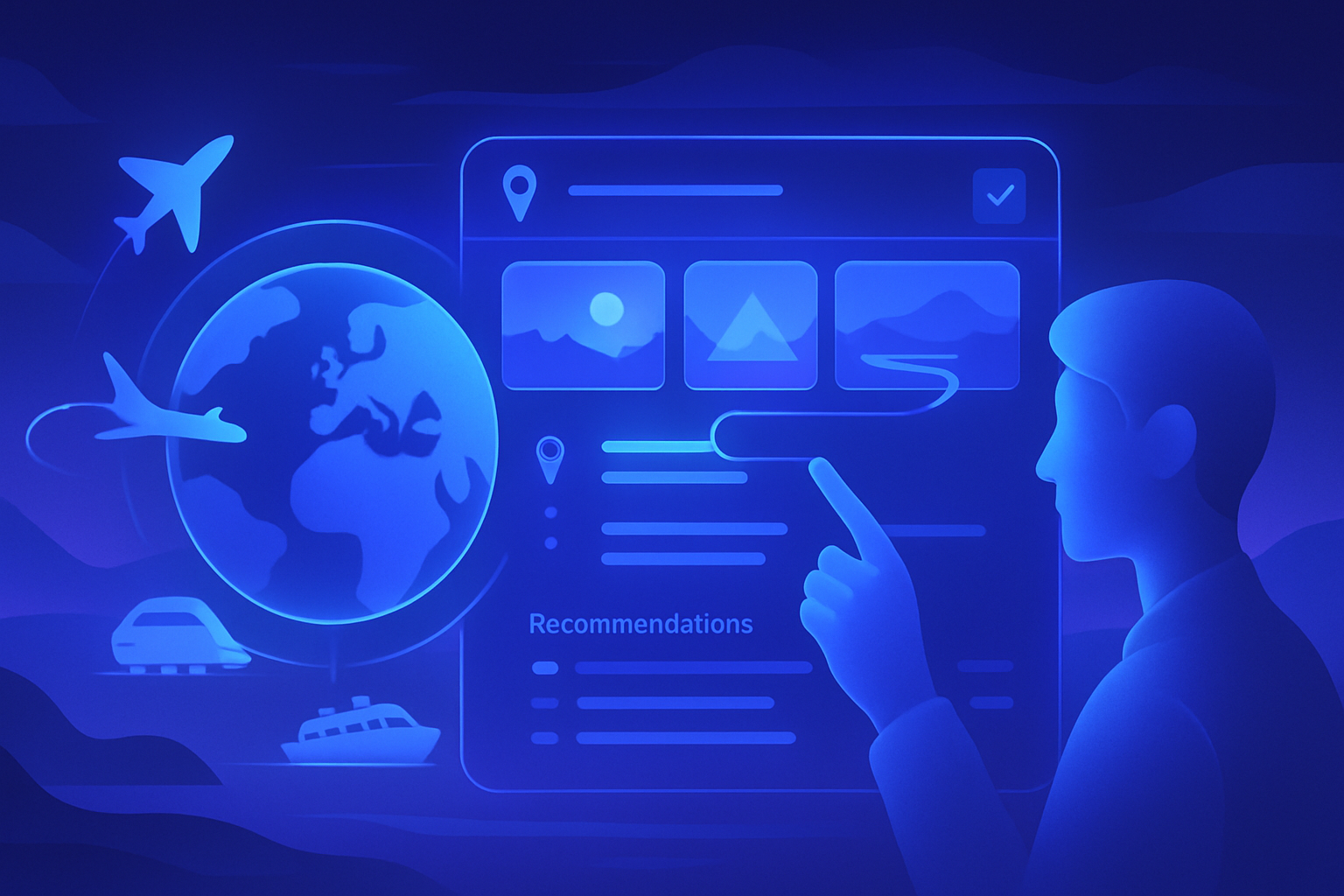Understanding the complexity of travel requires flawless and precise organization. The emergence of AI dedicated to trip planning is radically transforming this dynamic. The exponential interconnection of technologies, combined with the specific needs of travelers, gives rise to a *customized AI travel planner* capable of optimizing choices.
Save time and reduce stress. This innovation goes far beyond simple recommendations. The challenge lies in orchestrating varied constraints, ranging from budget to individual preferences, while considering logistical realities.
A revolutionary hybrid approach, combining LLM and algorithms. This represents a significant advancement in designing robust and tailored solutions. The potential of such a platform is immense, paving the way for experiences that are both seamless and memorable.
The challenges of travel planning
Travel agents traditionally help orchestrate comprehensive logistical processes, ranging from transportation to accommodations and catering. Users wishing to manage their own bookings often find themselves facing complex systems. Travel planning is a challenge due to numerous constraints that need to be considered, especially in terms of budget and time.
Limitations of language models
Advanced language models, such as LLMs, prove to be powerful tools for natural interactions. Their ability to reason intuitively allows them to collect and analyze vast amounts of information. Despite this, recent studies show that these models struggle with complex logical and mathematical reasoning. For example, during travel planning, LLMs offer viable solutions less than 4% of the time, even when additional tools are available.
An innovative approach to AI
A research team from MIT and the MIT-IBM Watson AI Lab has reevaluated the challenges posed by complex planning. Chuchu Fan, an associate professor at MIT, emphasizes that many of these problems pertain to combinatorial optimization. The team developed a framework that utilizes both LLMs and algorithms. This method combines the logical reasoning of LLMs with a satisfiability solver, a mathematical tool capable of rigorously checking the compatibility of planning criteria.
How the system works
The four-step process developed by the team is as follows: first, the LLM interprets the user’s travel request. It identifies essential parameters, such as budget, hotels, and destinations. Second, the steps are converted into Python code, which makes calls to APIs such as CitySearch and FlightSearch. Third, the solver activates to perform feasibility checks on the solution, and finally, the results are translated into a coherent itinerary to provide to the user.
Management of constraints and solutions
When constraints encounter difficulties, the framework develops alternatives. The solver generates codes identifying conflicting constraints. The user then receives an explanation of the possible options, allowing them to choose among the suggested modifications. The goal remains to facilitate the creation of a feasible travel plan that meets the different requirements of users.
Performance and results
The MIT-IBM team’s method has been tested against several standards. The results demonstrate a success rate of over 90% for itinerary generation, whereas other traditional methods struggle to reach 10% success. This advancement attests to the effectiveness of the new framework in planning.
Applications in other areas
Researchers have applied their method to various challenges, such as task allocation or circuit optimization. This model demonstrates an incredible flexibility, capable of adapting solutions to different contexts while maintaining a high level of performance. Such capabilities hint at significant opportunities for AI in various sectors.
Questions and answers on advances towards a customized AI travel planner
What are the benefits of a customized AI travel planner?
Customized AI travel planners offer an efficient solution for managing your trips by integrating specific criteria such as budget, transport and accommodation preferences, thereby creating tailored and suitable itineraries for your needs.
How does an AI engine optimize travel proposals?
An AI engine uses advanced algorithms and solvers to quickly analyze a user’s constraints and preferences, allowing it to propose viable and logical travel options, while considering various factors such as costs and availability.
What role do language models play in AI travel planning?
Language models facilitate interaction with users by interpreting requests in natural language, translating them into actionable planning steps for the algorithms and solvers.
How does an AI travel planner manage multiple constraints?
The AI travel planner employs combinatorial optimization techniques to analyze multiple constraints and propose alternative solutions when certain constraints cannot be satisfied.
Can an AI travel planner handle unforeseen circumstances?
Yes, these systems can adjust travel proposals in real-time in the face of unforeseen circumstances, such as cancellations or itinerary changes, by seeking appropriate replacement solutions.
What type of data does an AI travel planner use to design its itinerary?
It utilizes a vast dataset, including information about destinations, transportation, accommodations, and even real-time data on transportation operations to formulate relevant and current recommendations.
Do AI travel planners adhere to sustainability and ecological criteria?
Many systems incorporating AI travel planners consider environmental issues by proposing transportation and accommodation options that minimize ecological impacts, such as choosing public transport or eco-friendly hotels.
Is it necessary to understand programming to use an AI planner?
No, most users do not need programming skills. These tools are designed to be user-friendly and intuitive, making planning accessible to everyone.
What types of itineraries can be created with an AI travel planner?
An AI travel planner can manage a variety of itineraries, including business trips, family vacations, or even custom routes for special events, adapting to the specific needs of each user.






